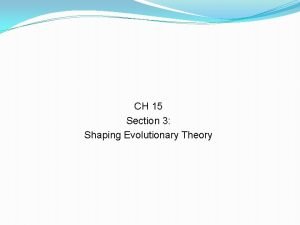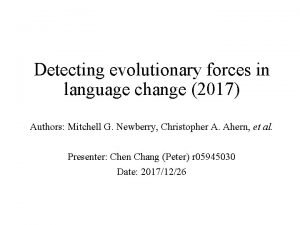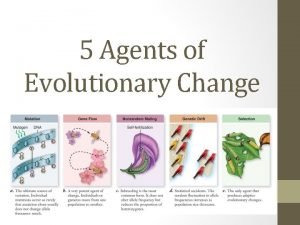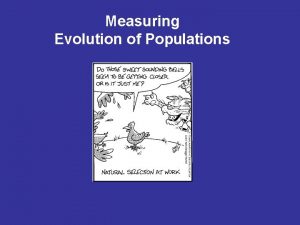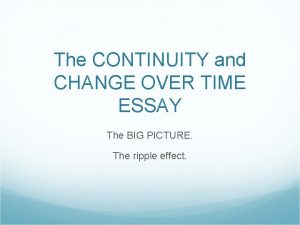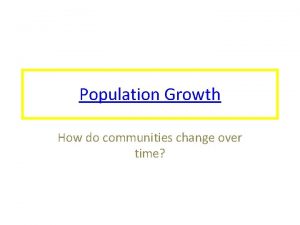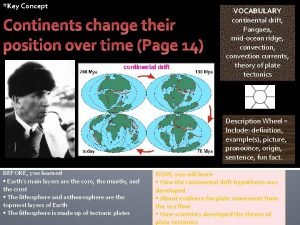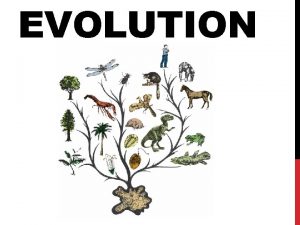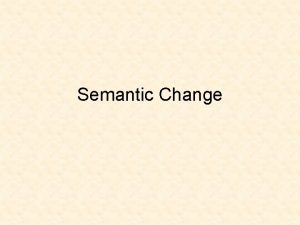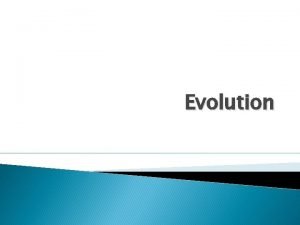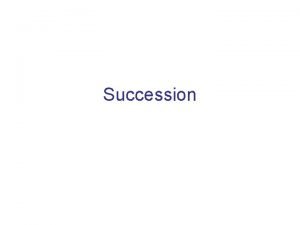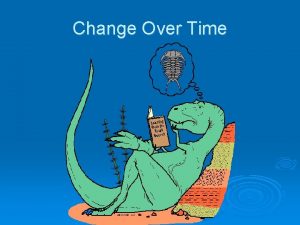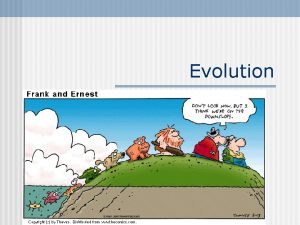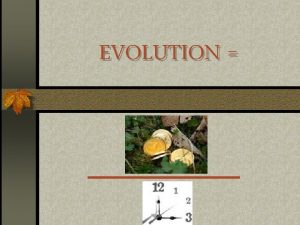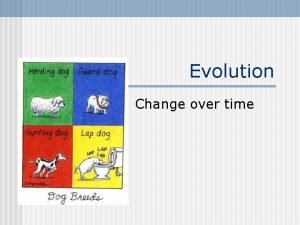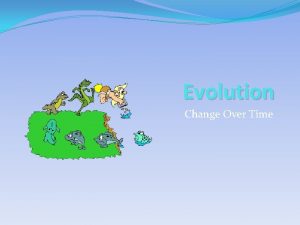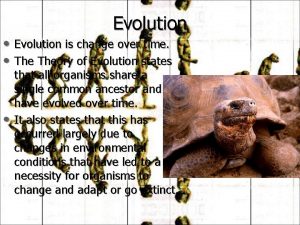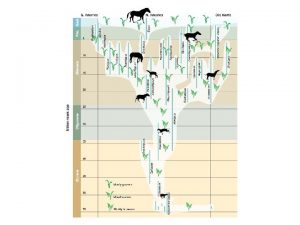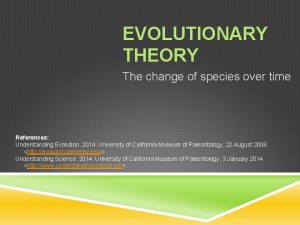Chapter 15 Evolutionary Theory Evolution change over time











- Slides: 11

Chapter 15

Evolutionary Theory Evolution • change over time • the process by which modern organisms have descending from ancient organisms • accounts for biological diversity • has been tested and well-supported • scientists DO NOT dispute the fact that evolution has occurred

Charles Darwin 1831 • during his travels on the H. M. S. Beagle, Darwin made many observations and collected evidence that led him to propose a revolutionary hypothesis about the way life changes over time

Darwin’s Observations 1. Animals seemed extremely well-suited to whatever environment they inhabited. 2. Some fossils resembled organisms that were still alive, while others looked unlike any organism ever seen 3. Galapagos Is. had very different climates which led to predictable variations between animals of the same species e. g. land tortoises

Influential Theories 1. An Ancient, Changing Earth • if the Earth could change over time, couldn’t living things change? 2. Population Growth • plants/animals produce numerous offspring every year • but, the majority of a species offspring die • what factors determine which offspring survive?

Evolution by Natural Selection • high birth rates and a shortage of life’s basic needs force organsims into a competition for resources e. g. living space, food

• “fitness” is the result of adaptation – any inherited characteristic that increases an organism’s chance of survival • can be structural or physiological • Individuals with characteristics that are not well-suited to their environment either die or leave few offspring

• this all occurs over time and without human control • as a result, species today look different from their ancestors

Evidence for Evolution 1. Fossil Record • by comparing fossils from different time periods, we can see various stages in the evolution of modern species from those that are now extinct

2. Geographic Distribution of Living Species • how can organisms living on completely different continents and being of completely different species have similar anatomies and behaviors? • because they were living under similar ecological conditions and were exposed to similar pressures of natural selection

**this can also explain why members of the same species can look very different from one another** 3. Homologous Body Structures • structures that have different mature forms but develop from the same clumps of cells in embryos
 Chapter 15 section 3 shaping evolutionary theory answer key
Chapter 15 section 3 shaping evolutionary theory answer key Chapter 15 section 3 shaping evolutionary theory
Chapter 15 section 3 shaping evolutionary theory Detecting evolutionary forces in language change
Detecting evolutionary forces in language change Agent of evolutionary change
Agent of evolutionary change 5 agents of evolutionary change
5 agents of evolutionary change Continuity and change over time essay example
Continuity and change over time essay example Why do communities change over time
Why do communities change over time A change of position over time
A change of position over time The gradual change in a species over time
The gradual change in a species over time Words change over time
Words change over time Coevolution
Coevolution A gradual change in a community over time.
A gradual change in a community over time.

